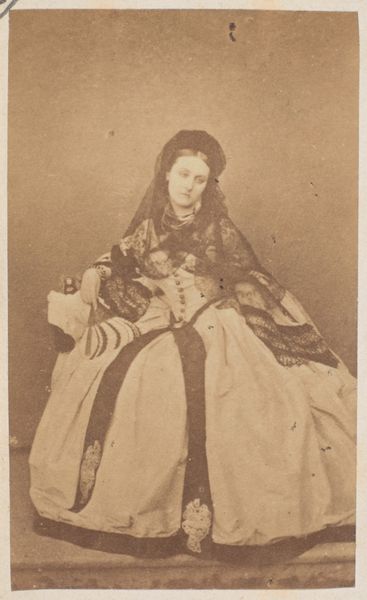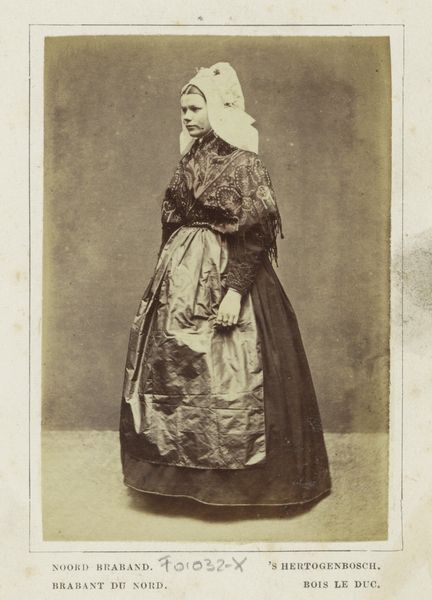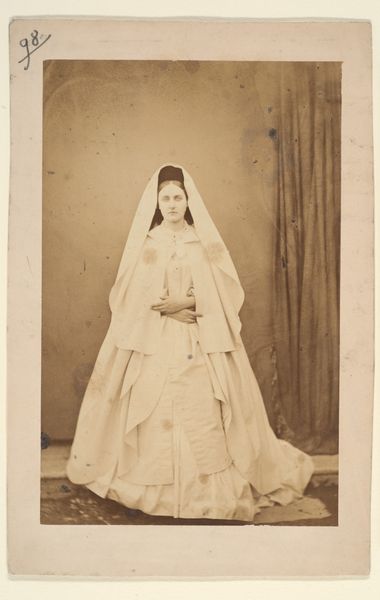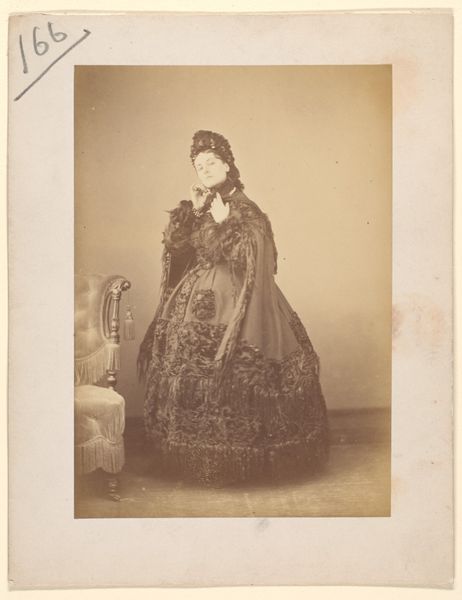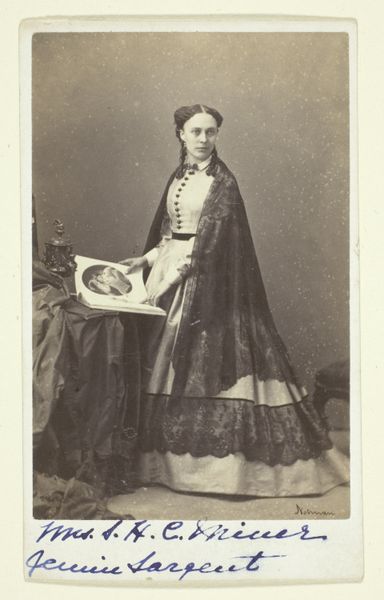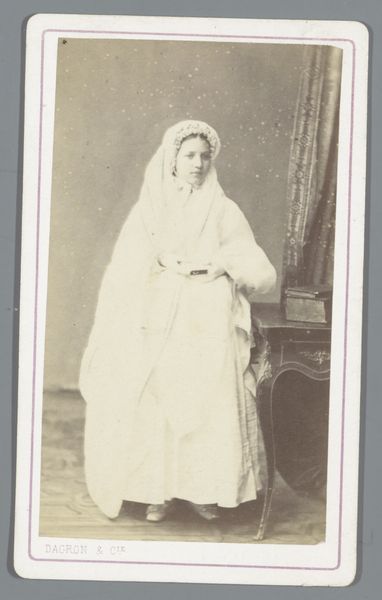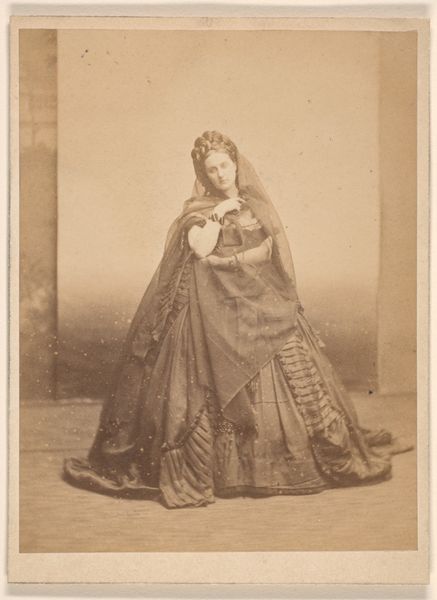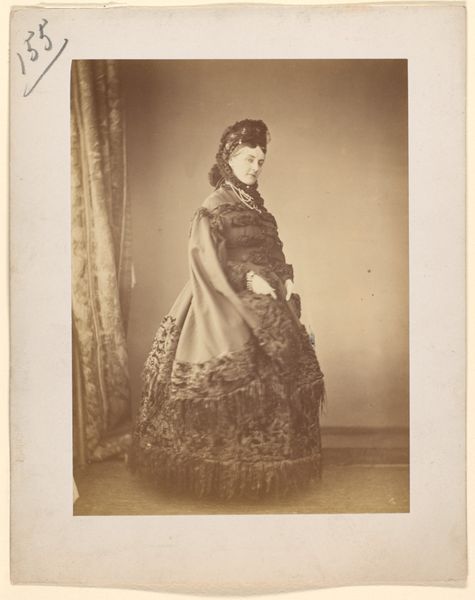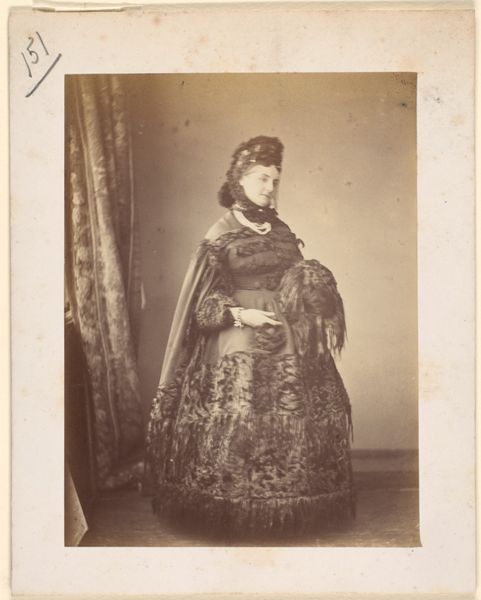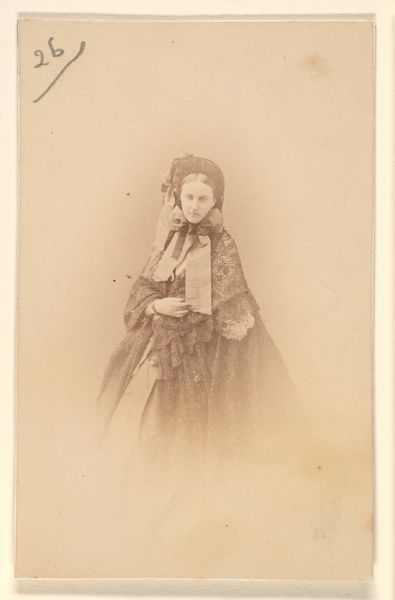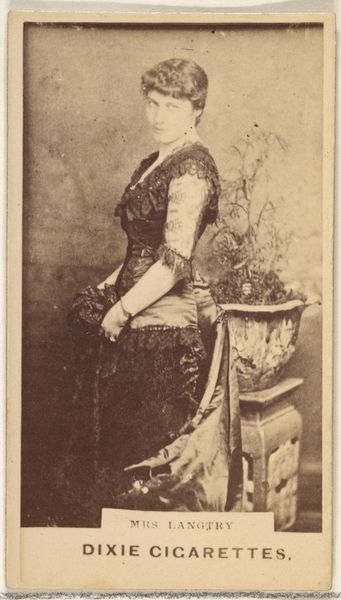![[Armenian Woman of Teheran] by Luigi Pesce](/_next/image?url=https%3A%2F%2Fd2w8kbdekdi1gv.cloudfront.net%2FeyJidWNrZXQiOiAiYXJ0ZXJhLWltYWdlcy1idWNrZXQiLCAia2V5IjogImFydHdvcmtzL2Q1NzFiN2M0LTNhODItNGUwZC05MGI1LWNmOWFmOTA5YWJmZi9kNTcxYjdjNC0zYTgyLTRlMGQtOTBiNS1jZjlhZjkwOWFiZmZfZnVsbC5qcGciLCAiZWRpdHMiOiB7InJlc2l6ZSI6IHsid2lkdGgiOiAxOTIwLCAiaGVpZ2h0IjogMTkyMCwgImZpdCI6ICJpbnNpZGUifX19&w=3840&q=75)
photography
#
portrait
#
photography
#
orientalism
Copyright: Public Domain
Curator: Up next we have an albumen print called “[Armenian Woman of Teheran]”, taken by Luigi Pesce sometime between 1840 and 1869. It's currently held here at The Metropolitan Museum of Art. Editor: My first impression is one of subdued elegance. The soft sepia tones create a delicate, almost dreamlike quality. Her gaze is arresting, though she doesn't quite meet the viewer's eyes. Curator: It's fascinating to consider the orientalist context of this work, given Pesce's background. These photographs often catered to European fascination with the "exotic" East. It raises questions about representation and power dynamics inherent in early photography. Editor: Absolutely. And the veil immediately evokes a sense of mystery, and perhaps also subtly signals modesty. Notice the ornate detail of her jewelry, contrasting with the stark backdrop, symbolizing status within her cultural milieu. But does the backdrop flatten her or highlight her? I see ambivalence there. Curator: It also offers insights into the social and cultural norms of the time. For example, it is useful when reflecting on the photographic portrait as it transitions from primarily documenting the aristocracy to middle-class aspiration. Consider the proliferation of such images throughout the period. How did this type of art effect or reinforce society's conception of itself? Editor: The composition really focuses attention on the hands as well, adorned with rings. A language of its own? One is open, palm facing upwards, as though expectant. Are we meant to see the possibility within that hand? Or, is the possibility ours, as witnesses? Curator: A photograph like this forces us to look closely not only at the subject, but at the apparatuses of cultural encounter, image-making, and collecting at work within this very space, the museum. Editor: True. Each artifact within this hall, regardless of the artist's intention, provides for viewers an occasion to reflect not only on art, but on themselves and one another, in time.
Comments
No comments
Be the first to comment and join the conversation on the ultimate creative platform.
